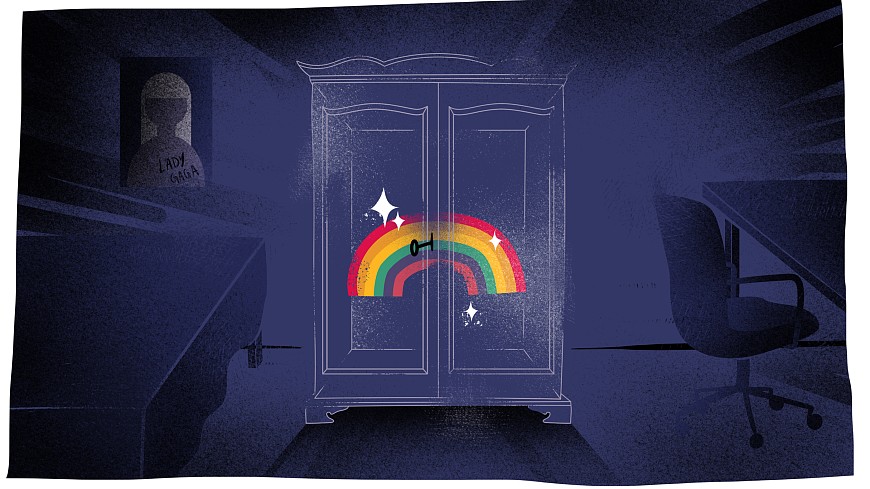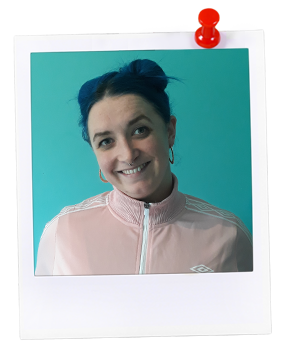Where rural LGBTI+ young people belong
The impact of youth work on inclusion and well-being
by Debbie O’Rourke
18/11/2020
The village I grew up in has a population of approximately 2 500 people and sits in the midlands of Ireland; it is surrounded by 20 miles of peat bogland. The nearest neighbouring towns with supermarkets and employment opportunities are 30 minutes away by car and the public bus service is one bus that leaves at 7:00 a.m. and returns at 7:00 p.m. This lived experience greatly influenced my interest in how people who live in rural Ireland participate in society, are included, or excluded and the barriers we face. Just as we do not choose if we are born part of the LGBTI+ community, we do not choose where we are born and spend our early years.
Because I did not have access to youth work when I grew up, I did not know or learn about it, so I set my sights on teaching as a profession to work with young people. As is usual in rural Ireland a person from my community asked me to “help out” with our local youth club once I had finished school because I had been in a young leader programme in my school. I joined the other volunteers working weekly with the group of young people aged 12-18 in the local community centre. Through essential child protection and leadership training I learned that the group was affiliated to a regional youth service that supported volunteer-led clubs across the county. As well as the weekly club, I joined the board of this organisation to advocate for volunteers, young people in clubs and contribute to good governance. I spent 12 years with that youth club and it still inspires and influences my youth work practice.
It was from this experience that I got on track to train as a youth worker; my main practice interests are youth work with excluded and minority young people, social inclusion and participation in working for change. I currently work in the south-east of Ireland with Waterford and South Tipperary Community Youth Service and part of my role is to co-ordinate our LGBTI+ youth project, ChillOUT. We purposefully use LGBTI+ to stand for Lesbian, Gay, Bisexual, Transgender, Intersex and the plus symbol for all others to include the many diverse sexuality and gender identities we are learning more about as time goes on. We deliberately made this decision in partnership with the young people as it is inclusive of the broad community and also specifically related to the I for intersex. We included that because intersex people are a very isolated community and we want to raise awareness and send a clear message that we understand the diversity of experiences intersex people have and we can support them. We were also influenced by the decision made by the youth advisory group who worked on the National LGBTI+ Youth Strategy because during their process they debated and discussed what would be fitting for the strategy name, so we wanted to reflect that and we feel it fits for our group; this, like most things is up for discussion, learning and change if the young people want it.
ChillOUT youth project is currently three informal weekly youth groups based in Waterford city, Dungarvan in West Waterford and Clonmel in South Tipperary. We work with LGBTI+ young people who live across the south-east and this is a huge area of a city surrounded by very small towns and villages and remote houses. Most young people travel by car to reach their weekly group and some travel up to and including one hour.
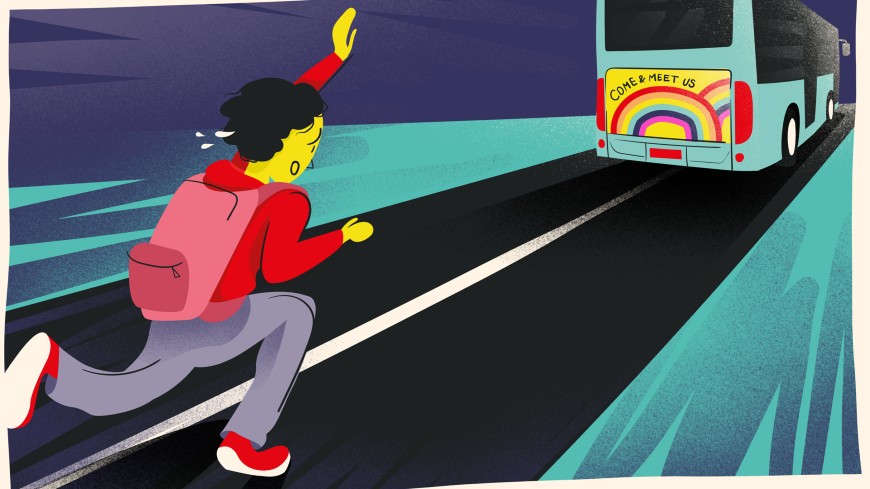
Our project takes part in a national network of youth workers with LGBTI+ groups which is co-ordinated and supported by BeLonG To, Ireland’s national organisation supporting LGBTI+ young people. BeLonG To’s mission is to support LGBTI+ young people as equals to achieve our vision through youth work, changing attitudes, and research. The national network was initiated in response to young LGBTI+ people travelling from all over Ireland to access youth work in Dublin, the capital city of Ireland; this meant they were making journeys of up to and including four hours. Realising this, BeLonG To also thought about the young people in areas where they could not access public transport or were not safe to make journeys like that without telling people where they were going. To respond to this, they partner with existing youth services to establish or develop their work with LGBTI+ young people. And in areas where no such group or service exists, but there may be adults or professionals who are interested in starting something, they support them to start groups.
I am proud to be the current chair of this network and it is worth noting that to ensure good representation the chair must be someone who works outside the capital city; this is a deliberate choice to reflect the spread of LGBTI+ youth work across the country. The national network is made up of youth workers from across Ireland who work with LGBTI+ youth groups; there is a mix of members from other national, regional and independent youth work organisations and services and it is a very diverse group. For those of us working rurally it is an essential space to advocate for and include rural LGBTI+ young people on a national level.
We meet four times per year usually but have held weekly meetings online since the start of lockdown. We agree our annual priorities and it is an invaluable space to get support, share practice, share and respond to emerging needs and issues, give and receive peer support, as well as collectively working on proactive responses to the needs of LGBTI+ young people. The purpose of the national network is to ensure LGBTI+ young people have access to dedicated, high-quality youth services and supports, by connecting youth workers and volunteers around the country in a forum for working collectively for change, informed by the voice and experience of LGBTI+ young people, sharing knowledge, best practice, experience and learning and supporting and inspiring each other.
 So what is life in rural Ireland like?
So what is life in rural Ireland like?
In rural Ireland young people live their lives at home, in school and for some in the local sports club, if there is one. Communities are known for their deeply felt and acted sense of identity that is tied to place; there often exists strong rivalry between villages and a clannish mentality amongst people from small places. You are usually identifiable first by who your parents or family are and often have a network of relations in the same place, and connection is verified in this way. Hearing “Who is your mother?” when you meet someone new is a familiar experience.
With this mentality comes a fierce defence and protection of people who are “from” a place and there are traditional expectations and norms about how life is lived. This can be a very affirming and supportive culture to grow up in if you fit the norms. The greatest strength of rural communities is the way local people respond to local challenges, when an issue or difficulty is experienced collectively, and if support is needed people gather in large numbers and respond to the needs of others.
When it comes to social inclusion, geography, family and community of place are the first measure of a person. In rural Ireland we do not always see diversity reflected in the same way we see in wider society. You may not see or know any LGBTI+ people and it would not be unusual not to hear or learn anything about sexuality or gender until you get older and go to college or work, if you can do that.
As a youth worker it is vital to understand and consider the complexity of intersectionality and how it relates to the freedom or oppression faced by someone due to their age, sexuality, gender identity, race, ethnicity, ability, access to resources and in this case where they live. The interplay between multiple aspects of identity can mean there are differences in the barriers any individual young person will face in life and disadvantages can really stack up for some. We can break through and overcome barriers while remembering that they are not the same for everyone and some young people are disadvantaged in multiple ways.
While there is belonging and inclusion to a community of place, when you start to apply a social analysis different people exist but are invisible. For young LGBTI+ people who are growing up and learning who they are, the strong inclusion as part of a community can break down and become isolation if they can’t express and be supported in their sexuality and gender identity. Many do not risk coming out until they are older and can move away from where they are from. For young people who may not have supportive families, teachers or peers or a place to find them, the distance between where they are and where they belong can feel like a world away.
When it comes to social outlets and places to mix and be with peers, in some areas the options start with school and end with sports clubs. For young people who do not fit in, youth clubs and youth services where understanding, acceptance and inclusion of difference is the norm become a lifeline.
Accessing youth clubs and services in rural Ireland is not easy. I worked with a volunteer team for 10 years to run our local youth club and it was an ongoing struggle to meet and keep people who were interested in maintaining the group for young people. There was a demand and need for a place where young people had ownership and freedom to be themselves and it was a struggle to keep it open. We know that this challenge is shared across Ireland in remote locations, so how do rural LGBTI+ young people access the support and opportunities that are made possible through youth work if there is not equal access?
 Blending in or standing out
Blending in or standing out
Structural barriers to participation include social and physical isolation, access to transport links, poverty, and silence. The silence that I reference here is a feeling as much as an actual response to LGBTI+ people. In rural communities in Ireland, there is a huge value placed on people’s individual or family privacy and this can lead to keeping things hidden which are perceived as abnormal, embarrassing, hard to express or share. For a very long time in Ireland, like across the world, the misunderstanding and shame related to not being straight or having any difference related to gender identity or expression had a massive negative impact which still affects people. Homophobia and transphobia were widely socially acceptable, regularly expressed and maintained. This leads to people hiding who they are, not being able to learn about or express themselves and not safely, legally or socially being able to openly show or tell people they are part of the LGBTI+ community.
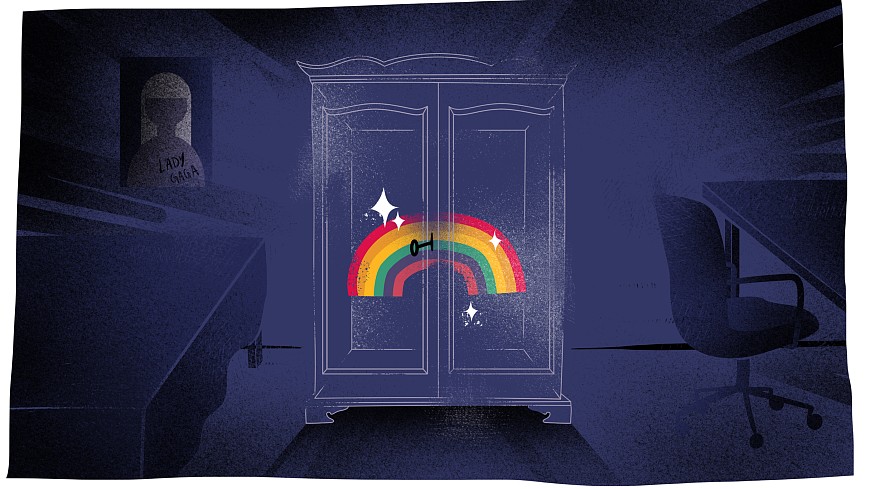
This stigma led to people staying in the closet or moving away from where they came from to more accepting and open bigger cities or towns. It was like if nobody talked about LGBTI+ people they didn’t exist and for those of us who experienced that, it can be like you don’t exist. When open slurs and discrimination are widely shared around you, including from the people you love, it can send a message that you should hide, stay quiet or risk being left out, kicked out, openly mocked and teased, and face violence. For young people who are on their own journey of self-discovery and learning, to discover that you are someone who is hated or excluded, the bravery to face the world and show who you really are breaks through the silence. As youth workers we must stay highly aware of and understand these dynamics, to be a place or person where young LGBTI+ people find the strength to stand up to this or get a break from it for a brief time, once a week at least.
To reach young LGBTI+ young people, youth work gets creative, builds links, relationships and networks with schools, clubs and communities. We spread information with leaflets, posters, stickers, word of mouth, awareness and build capacity through training and empowerment of those already working in rural communities to create inclusive spaces. One young person who attends ChillOUT, the youth group I work with, said this about his school experience:
I still hear homophobic slurs and people who were rude and unkind to me are no longer really able to upset me because even though our school has a zero tolerance policy to bullying it still happens and I choose not to hear it. ChillOUT gave me that strength, that knowledge that there are people who support me and care for me.”
This shows the power of youth work for rural LGBTI+ young people.
A good example of how youth work indirectly improves rural LGBTI+ young people’s environment is BeLonG To and the Department of Education, Ireland’s annual Stand Up campaign to end homophobic and transphobic bullying in Irish second-level schools. Preparing for the campaign annually, there is training for youth workers in the national network to empower youth workers to deliver teacher training in their regions in LGBTI+ awareness. These teachers are then supported to run events and activities in their schools and this engagement creates a ripple effect through the school community which makes schools safer and more inclusive of LGBTI+ students. <>
Some specific competencies for working with LGBTI+ young people are being open and non-judgmental including not making assumptions, being able to build and maintain a safe space, commitment to and taking action towards your own ongoing learning and development and understanding the basic terminology and issues faced by LGBTI+ young people. I often say to colleagues: we don’t have to know and understand everything; being open and showing some sign that you are accepting will signal to an LGBTI+ young person that you are a safe person to talk to. This might be displaying the rainbow flag or an LGBTI+ poster somewhere visible, mentioning diverse sexualities or gender or vocalising your support. You can start from there and find out everything else but the most important competency is being able to listen, hear the young person and support them to find out more or take the next steps they want to.
Outreach to schools to deliver training, workshops, meet students and promote our LGBTI+ youth groups is an invaluable way to reach rural LGBTI+ young people. They might not speak to you on the day or ask a question but they see you, they understand and feel your presence and availability. It can be weeks or months before a young person joins the group and when I ask how they heard about us I often hear “You came to my school to give a talk” or I saw a poster in my school. Many rural young people hear about our groups first in schools, so reaching teachers and building relationships with schools in rural areas can be the first step on the path to rural LGBTI+ young people’s participation and inclusion. Getting posters, information leaflets and our contact details out to schools is a key part of my work; outreach can start there and then build to more engagement with schools. It is important to say that not all schools are open or welcoming to working with us, so this process can take a long time to build trust and work together to look at school policy about equality and support the school’s development in relation to supporting LGBTI+ young people. BeLonG To have pioneered work in this area through the Safe and Supportive Schools project, which developed and tested a whole-school community model that involved working with teachers, parents, students and the broader community to build a safe, supportive and inclusive environment for LGBT young people.
The skills of youth workers are ideally placed to respond to the challenges identified, and best practice examples exist across the national network of LGBTI+ youth workers. In 2018, a LGBTI+ National Youth Strategy, 2018-2020 was published to respond to the specific needs of LGBTI+ youth in Ireland and “to ensure that all LGBTI+ young people are visible, valued and included in Irish society” (DCYA 2018).
The limits of youth work provision are where services exist, but they may be underdeveloped and underfunded. The capacity and skill to reach rural LGBTI+ young people can be an extra ask and unless embedded and prioritised can get lost in general service provision. If services are limited overall, reaching rural LGBTI+ young people may be a step too far.
The need for targeted services for LGBTI+ young people is evidenced by the results of the consultation report for the LGBTI+ National Youth Strategy. Observations from young people when consulted for the strategy included concern that resources for LGBTI+ young people are disproportionately located in the urban centres: “Lack of support services in rural areas”, predominantly the Dublin area, “Why is everything in Dublin?”. Many references were made to the lack of resources and support provided through groups, social outlets and organisations in rural areas. “No gay clubs in the west of Ireland.”
Gender education often delivered by staff without appropriate training, the need for LGBTI+ and diversity training for all personnel working with young people (e.g. school staff, medical staff, social workers, psychologists, sports organisations, public sector workers, including those working in social welfare/passport offices, and airport staff) was a consistent message throughout the consultations.
A quote from a young person which is included in the report reads:
I think doctors also need better training on trans issues, as I would much prefer to go to the doctor (GP) with questions – as opposed to with extensive research – which they may or may not know about. I have been told that this is generally what happens when you go to the GP.”
If LGBTI+ young people are telling us they encounter professionals without the knowledge to support them, we need to listen to them and ensure that the participation and inclusion of LGBTI+ young people is made possible across the country. High quality youth work provision must reach every young person and not be a privilege of those young people who live in bigger towns and cities.
In 2019 we facilitated a group of young people from across the county to produce a booklet they entitled Listen Up. This project gathered and amplified the voices of rural LGBTI+ young people and detailed their experiences with professionals. They brought this to the professionals in a resource that made visible what was working well and highlighted what needed to change in how they were supported. Some examples of what they said works well were knowing adults in their life supported them, that an adult stands up for the LGBT community, being listening to without judgment and being supported and celebrated for being different. Some negative experiences include LGBTI+ bullying being ignored and not challenged in schools, never hearing anything about LGBTI+ people in school, sex education, not mentioning other than straight relationships or bodies, being misgendered, a young lesbian being forced to dance with a boy to make him happy and being ignored by a teacher after they came out to them. Through youth work that reaches and includes rural LGBTI+ young people, they can access essential support and participate in breaking down the barriers they experience.
In 2018, 2019 and 2020 the Department of Children and Youth Affairs of Ireland released additional funding for access to participation in youth work services specifically targeted for rural areas as recommended by the LGBTI+ National Youth Strategy. This funding enabled services to begin developing their work into new locations. In our organisation we used the funding for an outreach project to West Waterford, the most rural part of the county and focused on the towns Tramore and Dungarvan where young people would be able to get to a venue. We got high-quality printed information material, held open evenings and mapped transport pathways available to young people and shared this with them. In Clonmel, South Tipperary, we funded a part-time youth worker to establish a new targeted group there. Last year in the second round of funding we established a new targeted LGBTI+ youth group in Dungarvan, which has a high youth population of 32.6% in the surrounding rural areas. There are roughly 3 982 young people aged between 13 and 24, so we can estimate that is 398 LGBTI+ young people living in remote locations in the west of the county where there are limited services and transport links. Delivering youth work in rural areas brings additional challenges specifically related to availability and cost of transport, access to a setting to ensure safety and privacy and the activities available in the area.
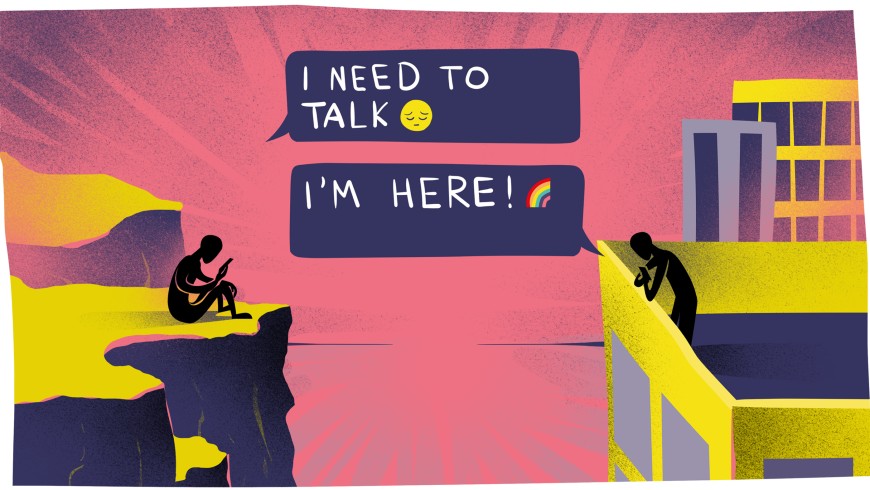
There is real value in start-up funding like this example to enable new developments in already overstretched organisations, and it did create opportunities for rural LGBTI+ young people to participate in and access youth work. The challenges it presented were the small grant amounts, short-term funding length and a short window to deliver. It takes a long time to establish and recruit a new group in a new community and earn the trust of LGBTI+ young people. This made it difficult to do sustainable work that did not raise unrealistic expectations with vulnerable young people. The time frame also affected the potential to recruit an available youth worker with capacity to deliver a complex project. The solution here is long-term investment in rural youth work to reach LGBTI+ young people.
 It is not all rainbows
It is not all rainbows
When we look at the health of LGBTI+ young people, they have poorer mental health and increased self-harm and suicidal ideation rates when compared to their peers. This is where we see the intersectionality that I mentioned earlier really impact, as they are experiencing higher levels of poor mental health and distress and are further away from the supports they need, meaning greater efforts and targeting is needed to make sure this group can achieve equal access.
The LGBTIreland Report (2016) highlights that LGBTI+ youth are twice more likely to self-harm, three times more likely to experience suicide ideation and four times more likely to experience anxiety and depression compared to their non-LGBTI+ friends. There is often less awareness of and access to essential, emergency or community mental health services in rural areas. This can be caused by stigma and silence around help-seeking behaviour and the location of services; there may be access to a general practitioner but other services are often a car journey away, so access can be practically cut off.
As well as this, according to the 2019 BeLonG To School Climate Survey, 73% of LGBTI+ students feel unsafe at school in Ireland. Since school is a main site of socialising and access to peers and relationships for rural young people, teachers and educators must be equipped with the tools to support LGBTI+ students, understand their needs and how to deal with anti-LGBTI+ related bullying at school.
During the Covid-19 lockdown, while our work continued online, there has been a decrease in young people’s mental health. This serves to highlight what we know about the negative impact of isolation and having to stay at home for LGBTI+ young people.
If rural LGBTI+ young people have poorer mental health and are further away from supports to address their needs, they are being further marginalised and the need for youth work to reach them increases. The difficulty rural LGBTI+ young people experience trying to access the supports that are available is further compounded by the lack of adequate, affordable and accessible transport in rural Ireland. What we have learned from working online is that the virtual world may be one way to partially bridge the physical gap which isolates rural LGBTI+ young people from their peers and services.
The negative experiences of young people are offset by the feedback we get from rural LGBTI+ young people who do access our group. When I asked one young gay man who travels 40 minutes to get to the group what it means to take part, he had this to say:
Before coming to ChillOUT, I was in a shell, I didn’t talk much and definitely didn’t speak up for myself. Now I have the confidence to be happy about who I am and speak out when I hear negative comments, I can brush them off and get on. I met my closest friends there. I wouldn’t know other LGBT young people if I didn’t join.”
Another young person said:
ChillOUT has shown me that my opinions actually matter, and it is ok to speak up. It is a safe place where people feel included and that is really important.”
There are specific additional needs experienced by young people living rurally and we know then that the experience of being an LGBTI+ young person is that they are further isolated from each other and the services they need. We know from our work and what has been found in national research is that public transport, employment and investment in youth and mental health services are key issues for rural young people. These are also key areas of life which LGBTI+ young people face additional barriers to participate in. To overcome these barriers to social inclusion, it is essential that LGBTI+ youth work continues to find, reach and involve rural LGBTI+ young people, to create safe spaces for them to be truly “visible, valued and included” in their own lives and their communities.
In rural Ireland, word of mouth can spread hate, suspicion and misunderstanding, but it can also be harnessed through youth work to be a very powerful tool to reach, include, connect and comfort rural LGBTI+ young people who are part of and belong in rural communities. The shared experience, and expertise in BeLonG To’s vibrant, driven and connected national network of youth workers with LGBTI+ groups, is changing lives through youth work, which is not only meeting the needs of rural LGBTI+ young people, but generating social change from the very grass roots up.
 References
References
McAleer M.-C. (2019), Youth work in rural Ireland: a qualitative research study exploring the provision of youth work in a rural context, National Youth Council of Ireland, available at www.youth.ie/wp-content/uploads/2019/11/NYCI-youth-work-in-rural-ireland-draft-v18aw.pdf, accessed 3 October 2020.

